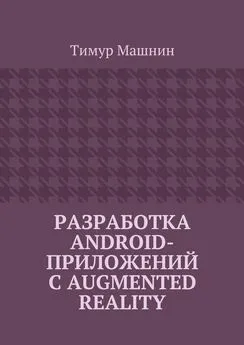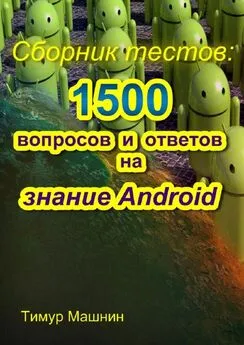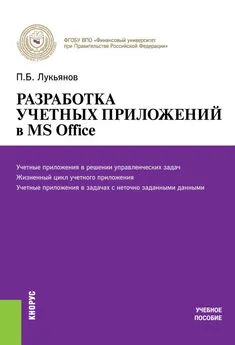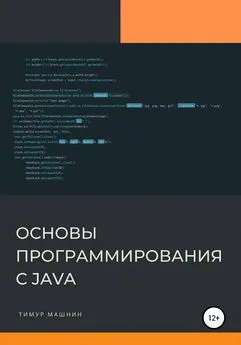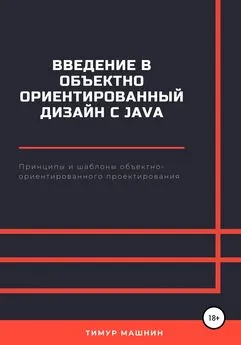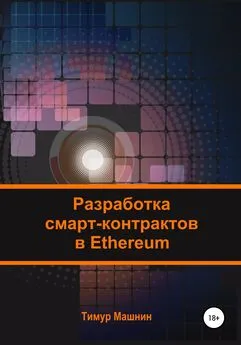Тимур Машнин - Разработка Android-приложений с Augmented Reality
- Название:Разработка Android-приложений с Augmented Reality
- Автор:
- Жанр:
- Издательство:неизвестно
- Год:неизвестен
- ISBN:9785448380907
- Рейтинг:
- Избранное:Добавить в избранное
-
Отзывы:
-
Ваша оценка:
Тимур Машнин - Разработка Android-приложений с Augmented Reality краткое содержание
Разработка Android-приложений с Augmented Reality - читать онлайн бесплатно ознакомительный отрывок
Интервал:
Закладка:
public static World sharedWorld;
public static World generateObjects (Context context, Location mCurrentLocation) {
sharedWorld = new World (context);
// The user can set the default bitmap. This is useful if you are
// loading images form Internet and the connection get lost
sharedWorld.setDefaultImage(R.drawable.beyondar_default_unknow_icon);
// User position (you can change it using the GPS listeners form Android
// API)
if (mCurrentLocation== null) {
mCurrentLocation=new Location (»»);
mCurrentLocation.setLatitude (41.90533734214473d);
mCurrentLocation.setLongitude (2.565848038959814d);
}
sharedWorld.setGeoPosition(mCurrentLocation.getLatitude(),mCurrentLocation.getLongitude ());
// Create an object with an image in the app resources.
// And the same goes for the app assets
GeoObject go = new GeoObject (1l);
go.setGeoPosition(mCurrentLocation.getLatitude()+0.00005,mCurrentLocation.getLongitude () -0.0001);
go.setImageUri("assets://creature_7.png»);
go.setName («Image from assets»);
// Add the GeoObjects to the world
sharedWorld.addBeyondarObject (go);
return sharedWorld;
}
}
import android.content.pm.PackageManager;
import android. location. Location;
import android. os. Bundle;
import android.support.annotation.NonNull;
import android.support.annotation.Nullable;
import android.support.v4.app.ActivityCompat;
import android.support.v4.app.FragmentActivity;
import android.widget.Toast;
import com.beyondar.android.plugin. googlemap. GoogleMapWorldPlugin;
import com.beyondar.android.world.GeoObject;
import com.beyondar.android. world. World;
import com.google.android.gms.common.ConnectionResult;
import com.google.android.gms.common. api. GoogleApiClient;
import com.google.android.gms. location. LocationListener;
import com.google.android.gms. location. LocationRequest;
import com.google.android.gms. location. LocationServices;
import com.google.android.gms.maps.CameraUpdateFactory;
import com.google.android.gms.maps. GoogleMap;
import com.google.android.gms.maps. GoogleMap. OnMarkerClickListener;
import com.google.android.gms.maps. OnMapReadyCallback;
import com.google.android.gms.maps.SupportMapFragment;
import com.google.android.gms.maps.model.Marker;
public class GoogleMapActivity extends FragmentActivity implements OnMarkerClickListener, OnMapReadyCallback, LocationListener, GoogleApiClient.ConnectionCallbacks, GoogleApiClient. OnConnectionFailedListener {
private GoogleMap mMap;
private GoogleMapWorldPlugin mGoogleMapPlugin;
private World mWorld;
GoogleApiClient mGoogleApiClient;
Location mCurrentLocation;
LocationRequest mLocationRequest;
@Override
protected void onCreate (Bundle savedInstanceState) {
super. onCreate (savedInstanceState);
setContentView(R.layout.map_google);
((SupportMapFragment) getSupportFragmentManager () .findFragmentById(R.id.map)).getMapAsync (this);
buildGoogleApiClient ();
}
/**
* Builds a GoogleApiClient. Uses the {@code #addApi} method to request the
* LocationServices API.
*/
protected synchronized void buildGoogleApiClient () {
mGoogleApiClient = new GoogleApiClient. Builder (this)
.addConnectionCallbacks (this)
.addOnConnectionFailedListener (this)
.addApi (LocationServices. API)
.build ();
createLocationRequest ();
}
protected void createLocationRequest () {
mLocationRequest = LocationRequest.create ();
// Sets the desired interval for active location updates. This interval is
// inexact. You may not receive updates at all if no location sources are available, or
// you may receive them slower than requested. You may also receive updates faster than
// requested if other applications are requesting location at a faster interval.
mLocationRequest.setInterval (10000);
// Sets the fastest rate for active location updates. This interval is exact, and your
// application will never receive updates faster than this value.
mLocationRequest.setFastestInterval (5000);
mLocationRequest.setPriority(LocationRequest.PRIORITY_HIGH_ACCURACY);
}
@Override
public void onStart () {
super. onStart ();
mGoogleApiClient.connect ();
}
@Override
public void onStop () {
super. onStop ();
mGoogleApiClient. disconnect ();
}
@Override
public void onResume () {
super. onResume ();
// Within {@code onPause ()}, we pause location updates, but leave the
// connection to GoogleApiClient intact. Here, we resume receiving
// location updates if the user has requested them.
if (mGoogleApiClient.isConnected ()) {
startLocationUpdates ();
}
}
@Override
protected void onPause () {
super. onPause ();
// Stop location updates to save battery, but don’t disconnect the GoogleApiClient object.
if (mGoogleApiClient.isConnected ()) {
stopLocationUpdates ();
}
}
protected void startLocationUpdates () {
if (ActivityCompat.checkSelfPermission (this, android.Manifest.permission.ACCESS_FINE_LOCATION)!= PackageManager.PERMISSION_GRANTED && ActivityCompat.checkSelfPermission (this, android.Manifest.permission.ACCESS_COARSE_LOCATION)!= PackageManager.PERMISSION_GRANTED) {
return;
}
LocationServices.FusedLocationApi.requestLocationUpdates (
mGoogleApiClient, mLocationRequest, this);
}
/**
* Removes location updates from the FusedLocationApi.
*/
protected void stopLocationUpdates () {
// It is a good practice to remove location requests when the activity is in a paused or
// stopped state. Doing so helps battery performance and is especially
// recommended in applications that request frequent location updates.
// The final argument to {@code requestLocationUpdates ()} is a LocationListener
// (http://developer.android.com/reference/com/google/android/gms/location/LocationListener.html).
LocationServices.FusedLocationApi.removeLocationUpdates (mGoogleApiClient, this);
}
@Override
public boolean onMarkerClick (Marker marker) {
// To get the GeoObject that owns the marker we use the following
// method:
GeoObject geoObject = mGoogleMapPlugin.getGeoObjectOwner (marker);
if (geoObject!= null) {
Toast.makeText (this, «Click on a marker owned by a GeoOject with the name: " + geoObject.getName (),
Toast.LENGTH_SHORT).show ();
}
return false;
}
@Override
public void onMapReady (GoogleMap googleMap) {
mMap=googleMap;
// We create the world and fill the world
mWorld = CustomWorldHelper.generateObjects (this, mCurrentLocation);
// As we want to use GoogleMaps, we are going to create the plugin and
// attach it to the World
mGoogleMapPlugin = new GoogleMapWorldPlugin (this);
// Then we need to set the map in to the GoogleMapPlugin
mGoogleMapPlugin.setGoogleMap (mMap);
// Now that we have the plugin created let’s add it to our world.
// NOTE: It is better to load the plugins before start adding object in to the world.
mWorld.addPlugin (mGoogleMapPlugin);
mMap.setOnMarkerClickListener (this);
mMap.moveCamera(CameraUpdateFactory.newLatLngZoom(mGoogleMapPlugin.getLatLng (), 15));
mMap.animateCamera (CameraUpdateFactory. zoomTo (19), 2000, null);
// Lets add the user position
GeoObject user = new GeoObject (1000l);
user.setGeoPosition(mWorld.getLatitude (), mWorld.getLongitude ());
user.setImageResource (R. drawable. flag);
user.setName («User position»);
mWorld.addBeyondarObject (user);
}
@Override
public void onConnected (@Nullable Bundle bundle) {
if (ActivityCompat.checkSelfPermission (this, android.Manifest.permission.ACCESS_FINE_LOCATION)!= PackageManager.PERMISSION_GRANTED && ActivityCompat.checkSelfPermission (this, android.Manifest.permission.ACCESS_COARSE_LOCATION)!= PackageManager.PERMISSION_GRANTED) {
return;
}
Location mLastLocation = LocationServices.FusedLocationApi.getLastLocation (mGoogleApiClient);
if (mLastLocation!= null) {
mCurrentLocation = mLastLocation;
String lat = String.valueOf(mCurrentLocation.getLatitude ());
String lon = String.valueOf(mCurrentLocation.getLongitude ());
Toast toast = Toast.makeText (this, «Last location» + lat + " " + lon, Toast. LENGTH_LONG);
toast.show ();
mWorld.clearWorld ();
mMap.clear ();
mWorld = CustomWorldHelper.generateObjects (this, mCurrentLocation);
mGoogleMapPlugin = new GoogleMapWorldPlugin (this);
mGoogleMapPlugin.setGoogleMap (mMap);
mWorld.addPlugin (mGoogleMapPlugin);
mMap.setOnMarkerClickListener (this);
mMap.moveCamera(CameraUpdateFactory.newLatLngZoom(mGoogleMapPlugin.getLatLng (), 15));
mMap.animateCamera (CameraUpdateFactory. zoomTo (19), 2000, null);
GeoObject user = new GeoObject (1000l);
user.setGeoPosition(mWorld.getLatitude (), mWorld.getLongitude ());
user.setImageResource (R. drawable. flag);
user.setName («User position»);
mWorld.addBeyondarObject (user);
} else {
startLocationUpdates ();
}
}
@Override
public void onConnectionSuspended (int i) {
}
@Override
public void onConnectionFailed (@NonNull ConnectionResult connectionResult) {
}
@Override
public void onLocationChanged (Location location) {
mCurrentLocation = location;
String lat = String.valueOf(mCurrentLocation.getLatitude ());
String lon = String.valueOf(mCurrentLocation.getLongitude ());
Toast toast = Toast.makeText (this,«Current location " + lat+" "+lon, Toast. LENGTH_LONG);
toast.show ();
mWorld.clearWorld ();
mMap.clear ();
mWorld = CustomWorldHelper.generateObjects (this, mCurrentLocation);
mGoogleMapPlugin = new GoogleMapWorldPlugin (this);
mGoogleMapPlugin.setGoogleMap (mMap);
mWorld.addPlugin (mGoogleMapPlugin);
mMap.setOnMarkerClickListener (this);
mMap.moveCamera(CameraUpdateFactory.newLatLngZoom(mGoogleMapPlugin.getLatLng (), 15));
mMap.animateCamera (CameraUpdateFactory. zoomTo (19), 2000, null);
GeoObject user = new GeoObject (1000l);
user.setGeoPosition(mWorld.getLatitude (), mWorld.getLongitude ());
user.setImageResource (R. drawable. flag);
user.setName («User position»);
mWorld.addBeyondarObject (user);
}
}
import android.content.pm.PackageManager;
import android. location. Location;
import android. os. Bundle;
import android.support.annotation.NonNull;
import android.support.annotation.Nullable;
import android.support.v4.app.ActivityCompat;
import android.support.v4.app.FragmentActivity;
import android.view. Window;
import android.widget.Toast;
import com.beyondar.android.fragment.BeyondarFragmentSupport;
import com.beyondar.android. opengl. util. LowPassFilter;
import com.beyondar.android. world. World;
import com.google.android.gms.common.ConnectionResult;
import com.google.android.gms.common. api. GoogleApiClient;
import com.google.android.gms. location. LocationListener;
import com.google.android.gms. location. LocationRequest;
import com.google.android.gms. location. LocationServices;
public class SimpleCameraActivity extends FragmentActivity implements LocationListener, GoogleApiClient.ConnectionCallbacks, GoogleApiClient. OnConnectionFailedListener {
Читать дальшеИнтервал:
Закладка:
